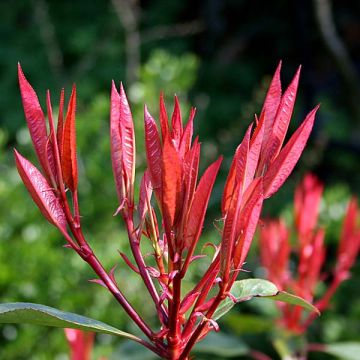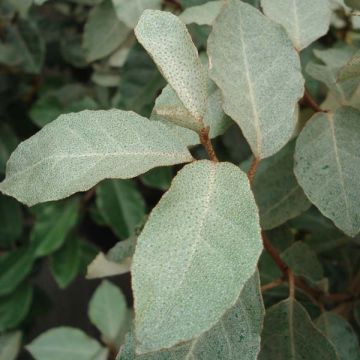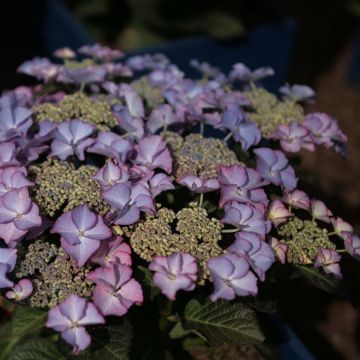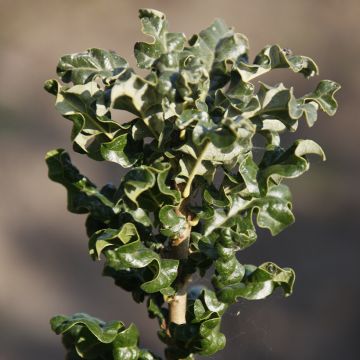Shipping country and language
Your country of residence may be:
Your country of residence is:
For a better user experience on our website, you can select:
Your shipping country:
Andorra
Austria
Belgium
Bulgaria
Canada
Chile
Croatia
Cyprus
Czechia
Denmark
Estonia
Finland
France
Germany
Greece
Hungary
Iceland
Ireland
Italy
Latvia
Lithuania
Luxembourg
Malta
Monaco
Netherlands
Poland
Portugal
Romania
Slovakia
Slovenia
Spain
Sweden
Switzerland
United Kingdom
We only deliver seed and bulb products to your country. If you add other products to your basket, they cannot be shipped.
Language:
French
German
Spanish
English
My Account
Hello
My wish lists
Plantfit
Log in / Register
Existing customer?
New customer?
Create an account to track your orders, access our customer service and, if you wish, make the most of our upcoming offers.


Brachychiton populneus


Brachychiton populneus


Brachychiton populneus


Brachychiton populneus
Brachychiton populneus
Brachychiton populneus
Kurrajong, Bottle Tree
Why not try an alternative variety in stock?
View all →Order in the next for dispatch today!
Dispatch by letter from 3,90 €.
Delivery charge from 5,90 € Oversize package delivery charge from 6,90 €.
More information
This item is not available in your country.
Shipping country:
Andorra
Austria
Belgium
Bulgaria
Canada
Chile
Croatia
Cyprus
Czechia
Denmark
Estonia
Finland
France
Germany
Greece
Hungary
Iceland
Ireland
Italy
Latvia
Lithuania
Luxembourg
Malta
Monaco
Netherlands
Poland
Portugal
Romania
Slovakia
Slovenia
Spain
Sweden
Switzerland
United Kingdom
Schedule delivery date,
and select date in basket
This plant carries a 24 months recovery warranty
More information
We guarantee the quality of our plants for a full growing cycle, and will replace at our expense any plant that fails to recover under normal climatic and planting conditions.
Oversize package: home delivery by special carrier from 6,90 € per order..
Express home delivery from 8,90 €.
Would this plant suit my garden?
Set up your Plantfit profile →
Description
Brachychiton populneus, also known as the Kurrajong, is a Australian tree of medium size, particularly well adapted to the Mediterranean coast due to its limited hardiness and excellent drought resistance. With its slender appearance and pyramidal or rounded habit, it is decorative with its evergreen foliage in olive green. Its summer flowering in the form of clusters of bell-shaped flowers, white cream, pink to red inside, later gives way to elongated brown fruits. Tolerating most soils as long as they are well-drained, this tree grows in sunny locations. In case of severe frost, it easily regrows from the stump.
Brachychiton is a genus of trees that includes 31 species, all native to Australia and Papua New Guinea. Formerly classified in the Sterculiaceae family, it now belongs to the large Malvaceae family, like Hibiscus, Linden or Baobab. Trees with a very ancient history, present on Earth for 50 million years, they are monoecious, meaning they bear separate male and female flowers.
B. populneus (formerly Sterculia diversifolia) is native to semi-arid areas of eastern Australia, where it has been used by Aboriginal people for multiple purposes: food (roasting seeds), utility (wood transformed into shields), agricultural (foliage used as fodder for livestock, etc.). It was then spread for ornamental purposes in different Mediterranean climate countries (South Africa, California, Spain, French Riviera, etc.).
This medium-sized tree reaches 10 to 12m (32ft 10in to 39ft 5in) in height, displaying a pyramidal habit with a dense crown that can become rounded with age. Similarly, its juvenile green bark gradually turns to grey, while the trunk thickens, sometimes even swelling after about fifteen years to store water, allowing it to withstand even semi-arid climates with rainfall of only about 300 mm (11.8in) per year. Its growth is relatively slow when left to itself, but much faster if it benefits from regular watering during the first years. It is adorned with evergreen or semi-evergreen foliage, depending on the winter it faces, in olive green. The leaves, about ten centimetres long, are alternate and generally simple, shaped like Poplar leaves, more or less obovate to elliptical and long acuminate. Sometimes, they can also be trilobed and take on a pinkish hue when they first appear, before turning green.
In summer, clusters of small bell-shaped flowers, 1 to 2cm (0.4 to 0.8in) long, composed of 5 to 6 elegantly recurved petals, like Lily of the Valley flowers, appear. They are white-cream to greenish on the outside, with a brighter interior, punctuated with purple-pink or red. Male flowers and female flowers coexist on the tree, the latter giving elongated fruits, 5cm (2in) long, brown in colour, resembling a slender ship's hull when dehiscing, revealing 3 to 8 orange seeds, 6 to 8mm (0.2 to 0.3in) in size.
This frost-sensitive tree withstands brief cold spells of around -7°C, which makes it one of the hardiest species of Brachychiton. This probably explains its wide distribution around the world. Another reason for its success is undoubtedly its very good drought resistance as well as its heat tolerance: temperatures of 40°C (104 °F) do not scare it! It grows in most soils, tolerating limestone well, but does not like stones and requires very good drainage.
This Brachychiton is a low-maintenance plant, accustomed to withstanding drought episodes. It is also capable of regrowing from the stump after exceptional frost. Used in urban plantings in favourable climates, it can be integrated into a diverse planting scheme with other exotic plants, especially shrubs, as it tends to branch relatively high. For example, plant a Viburnum lucidum at its base, an evergreen Viburnum with beautiful shiny dark green foliage, which curiously turns red-purple in autumn. Its fragrant white flowering precedes that of the Brachychiton in spring. Another drought-tolerant evergreen shrub, the Fremontodendron californicum, will dazzle you with its bright yellow flowering in June-July.
Brachychiton populneus in pictures




Plant habit
Flowering
Foliage
Botanical data
Brachychiton
populneus
Malvaceae
Kurrajong, Bottle Tree
Australia
Other Shrubs A to Z
Planting and care
Plant Brachychiton populneus preferably in spring or early autumn, in a very mild climate, where frost is rare and not intense. Choose a sunny location. Install it in an ordinary but very well-drained, deep, loose, rather fertile and not too rocky soil. It is quite accommodating in terms of soil pH, which can range from slightly acidic to reasonably alkaline. The cold resistance of this tree will be greater if the soil remains dry in winter: for the first two years, it may be useful to protect the stump in winter with a thick mulch. Dig a deep planting hole, add some compost and coarse sand or gravel to your garden soil to improve soil quality and drainage if needed. Water abundantly after planting and during the first two summers in case of prolonged drought. This bush is very water-efficient once established, but a good watering every 15 days will accelerate its growth.
Planting period
Intended location
Care
This item has not been reviewed yet - be the first to leave a review about it.
Summer-flowering shrubs
Haven't found what you were looking for?
Hardiness is the lowest winter temperature a plant can endure without suffering serious damage or even dying. However, hardiness is affected by location (a sheltered area, such as a patio), protection (winter cover) and soil type (hardiness is improved by well-drained soil).

Photo Sharing Terms & Conditions
In order to encourage gardeners to interact and share their experiences, Promesse de fleurs offers various media enabling content to be uploaded onto its Site - in particular via the ‘Photo sharing’ module.
The User agrees to refrain from:
- Posting any content that is illegal, prejudicial, insulting, racist, inciteful to hatred, revisionist, contrary to public decency, that infringes on privacy or on the privacy rights of third parties, in particular the publicity rights of persons and goods, intellectual property rights, or the right to privacy.
- Submitting content on behalf of a third party;
- Impersonate the identity of a third party and/or publish any personal information about a third party;
In general, the User undertakes to refrain from any unethical behaviour.
All Content (in particular text, comments, files, images, photos, videos, creative works, etc.), which may be subject to property or intellectual property rights, image or other private rights, shall remain the property of the User, subject to the limited rights granted by the terms of the licence granted by Promesse de fleurs as stated below. Users are at liberty to publish or not to publish such Content on the Site, notably via the ‘Photo Sharing’ facility, and accept that this Content shall be made public and freely accessible, notably on the Internet.
Users further acknowledge, undertake to have ,and guarantee that they hold all necessary rights and permissions to publish such material on the Site, in particular with regard to the legislation in force pertaining to any privacy, property, intellectual property, image, or contractual rights, or rights of any other nature. By publishing such Content on the Site, Users acknowledge accepting full liability as publishers of the Content within the meaning of the law, and grant Promesse de fleurs, free of charge, an inclusive, worldwide licence for the said Content for the entire duration of its publication, including all reproduction, representation, up/downloading, displaying, performing, transmission, and storage rights.
Users also grant permission for their name to be linked to the Content and accept that this link may not always be made available.
By engaging in posting material, Users consent to their Content becoming automatically accessible on the Internet, in particular on other sites and/or blogs and/or web pages of the Promesse de fleurs site, including in particular social pages and the Promesse de fleurs catalogue.
Users may secure the removal of entrusted content free of charge by issuing a simple request via our contact form.
The flowering period indicated on our website applies to countries and regions located in USDA zone 8 (France, the United Kingdom, Ireland, the Netherlands, etc.)
It will vary according to where you live:
- In zones 9 to 10 (Italy, Spain, Greece, etc.), flowering will occur about 2 to 4 weeks earlier.
- In zones 6 to 7 (Germany, Poland, Slovenia, and lower mountainous regions), flowering will be delayed by 2 to 3 weeks.
- In zone 5 (Central Europe, Scandinavia), blooming will be delayed by 3 to 5 weeks.
In temperate climates, pruning of spring-flowering shrubs (forsythia, spireas, etc.) should be done just after flowering.
Pruning of summer-flowering shrubs (Indian Lilac, Perovskia, etc.) can be done in winter or spring.
In cold regions as well as with frost-sensitive plants, avoid pruning too early when severe frosts may still occur.
The planting period indicated on our website applies to countries and regions located in USDA zone 8 (France, United Kingdom, Ireland, Netherlands).
It will vary according to where you live:
- In Mediterranean zones (Marseille, Madrid, Milan, etc.), autumn and winter are the best planting periods.
- In continental zones (Strasbourg, Munich, Vienna, etc.), delay planting by 2 to 3 weeks in spring and bring it forward by 2 to 4 weeks in autumn.
- In mountainous regions (the Alps, Pyrenees, Carpathians, etc.), it is best to plant in late spring (May-June) or late summer (August-September).
The harvesting period indicated on our website applies to countries and regions in USDA zone 8 (France, England, Ireland, the Netherlands).
In colder areas (Scandinavia, Poland, Austria...) fruit and vegetable harvests are likely to be delayed by 3-4 weeks.
In warmer areas (Italy, Spain, Greece, etc.), harvesting will probably take place earlier, depending on weather conditions.
The sowing periods indicated on our website apply to countries and regions within USDA Zone 8 (France, UK, Ireland, Netherlands).
In colder areas (Scandinavia, Poland, Austria...), delay any outdoor sowing by 3-4 weeks, or sow under glass.
In warmer climes (Italy, Spain, Greece, etc.), bring outdoor sowing forward by a few weeks.





























